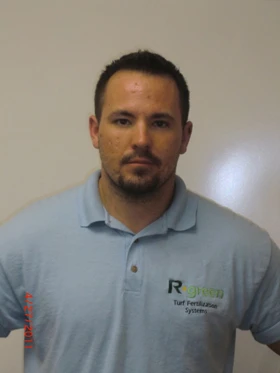
Until recently, Ryan Wilmott had never been sold on the effectiveness or cost efficiency of organic fertilizers and didn’t want to take the risk of adding the products to his service offerings. But things have changed.
“We’re 100 percent organic, as far as fertilizers go,” says Wilmott, owner of Lehigh Valley, Pa.-based R-Green Organic Turf Fertilization Systems.
The reason for the change of heart, Wilmott says, is bionutrition. Also known as biofertility, the method consists of applying living microorganisms to turf, trees and shrubs. These tiny living things change the biology of the soil and help facilitate nutrient availability and uptake.
Wilmott and others have seen positive results from using the nutrient as their fertilizer program.
The longer it’s used, the more it feeds the soil and leads to increased increased insect and disease suppression, says Tom Winkler, owner of Go Organic Lawn Care in Haledon, N.J. As a result, lawns on a biofertility program don’t need as much pesticide or traditional fertilizer, he adds.
In fact, Wilmott has reduced preemergent weed control product usage by 80 to 95 percent, he says, crediting bionutrition for the decreased need.
Nathan Brandon, owner of Nashville, Tenn.-based Turf Managers, says it’s because of biofertility that he’s able to lower the level of nitrogen input in applications.
Brandon also notes that he’s able to combat a disease that is prevalent in the mid-Tennessee region.
“In yards that have been on the program for a while, the severity of brown patch outbreaks is less severe than clients starting with nothing done or who are on a traditional fertilizer program,” he says. “Years of biostimulant applications are getting the soil working like it’s supposed to. The good bacteria and microbes in the soil are working against the brown patch.”
While the benefits might make bionutrition seem like a no-brainer, some lawn care companies have to take a hard look at the program before committing. There usually are equipment costs involved. Companies who have always applied granular fertilizers will have to make the switch to liquid application equipment. Existing sprayer equipment usually has to be updated with nozzles with bigger holes so the living microorganisms can safely flow through without being killed.
“It wasn’t a cheap undertaking, but we look at the long-term of it, and it works,” Winkler says. “It’s a huge benefit to the environment as well.”
Wilmott ends up saving in other areas, he says. He applies the bionutrients in fewer applications than he would with synthetic fertilizer, and less preemergent is needed, so he saves in the cost of materials and the labor to apply them.
The cost of synthetic fertilizer has skyrocketed in recent years; a bionutrition program achieves the same goal – a green lawn – without the fuel-tied costs.
Cost savings or not, Eric Greenwood, owner of Heritage Lawn Care in Ann Arbor, Mich., figures he can charge more for the biofertility program because of its benefits and lets customers choose if they want the organic or traditional treatments.
Most of the time, a green lawn is what is most important to customers – not the type of fertilizer program, Brandon says. That’s why he automatically employs a biofertility program instead of giving the customer the choice between this method and traditional synthetic fertilizers.
For customers who are organics-conscious, it’s a way for the company to differentiate itself from the competition. For the rest of the clients, it still achieves the results they’re seeking, Brandon argues.
“At the end of the day, from what we have figured out, 95 percent of clients don’t care what we use,” he says. “As long as their lawn looks good, they’re happy.”
Latest from Lawn & Landscape
- Sgro named Yanmar Compact Equipment's North American president
- Aphix acquires Curb Appeal Landscaping in Birmingham
- Project EverGreen helps revitalize Milan Park in Detroit
- Trex Company wins Product of the Year, Judges’ Choice Winner at Environment+Energy Leader Awards
- General Equipment & Supplies in Fargo adds Takeuchi equipment
- Mariani Premier Group acquires Hazeltine Nurseries
- EnP Investments adds Mark McCarel as Northeast territory sales manager
- Our April issue is now live





